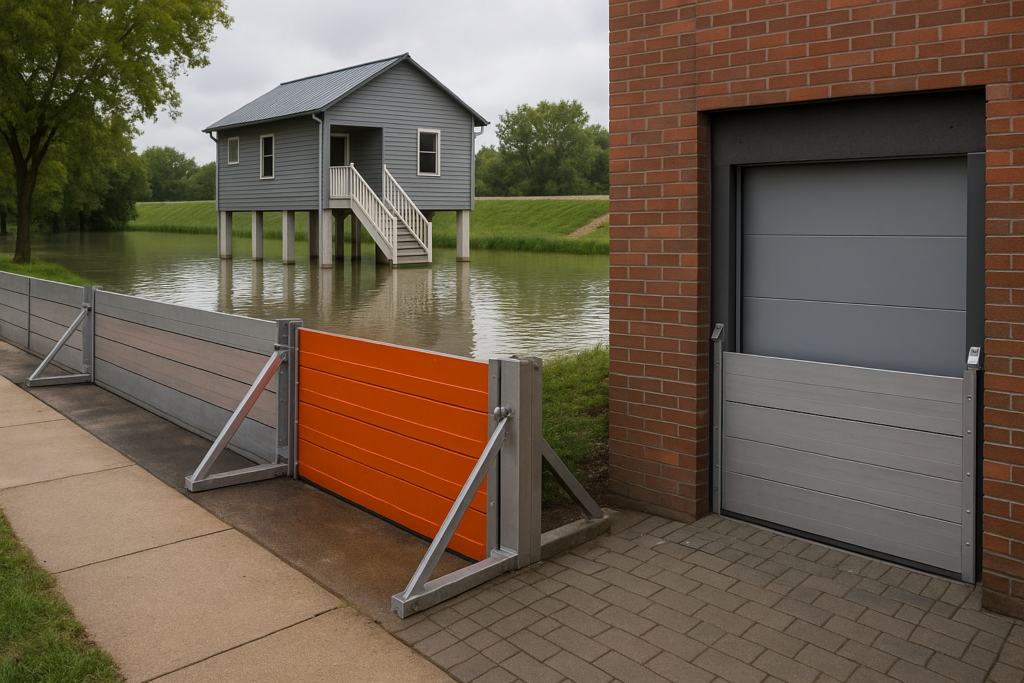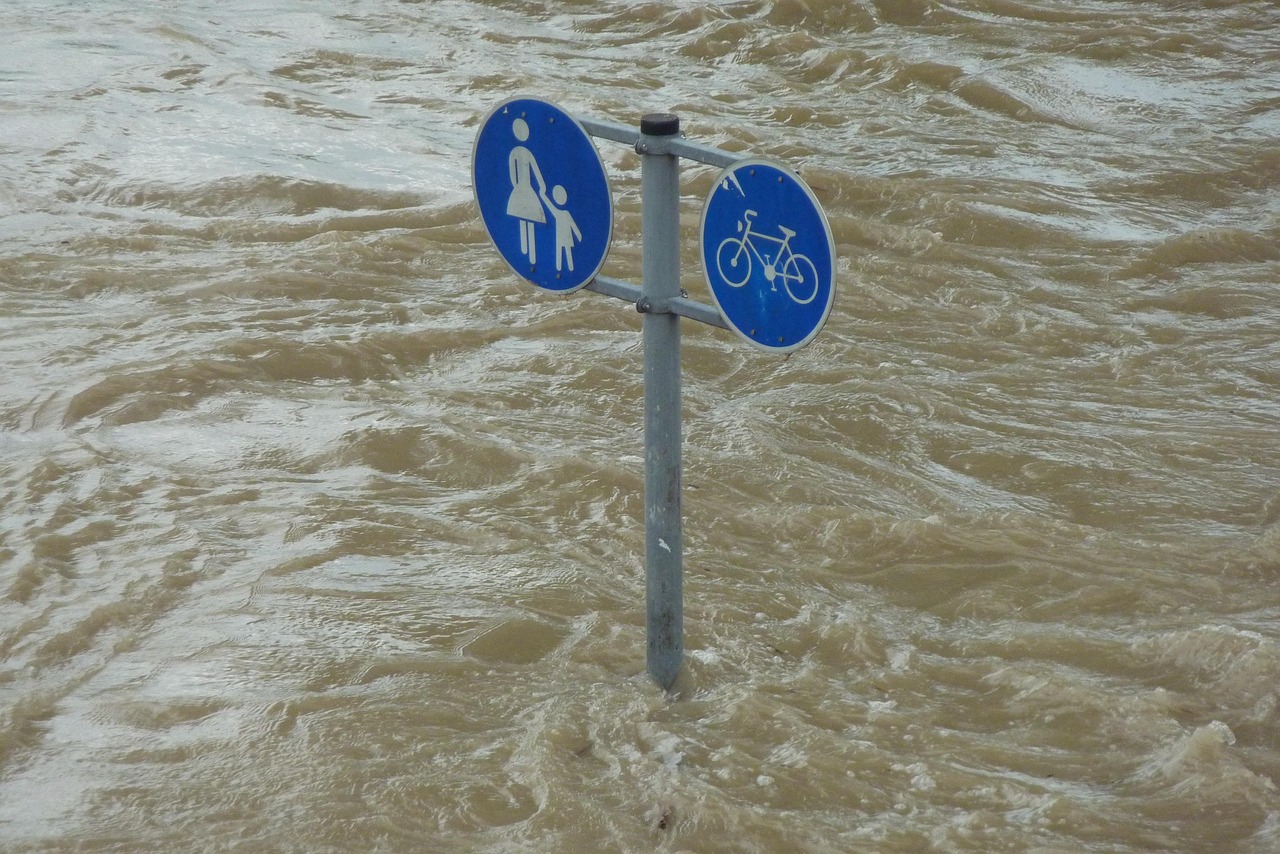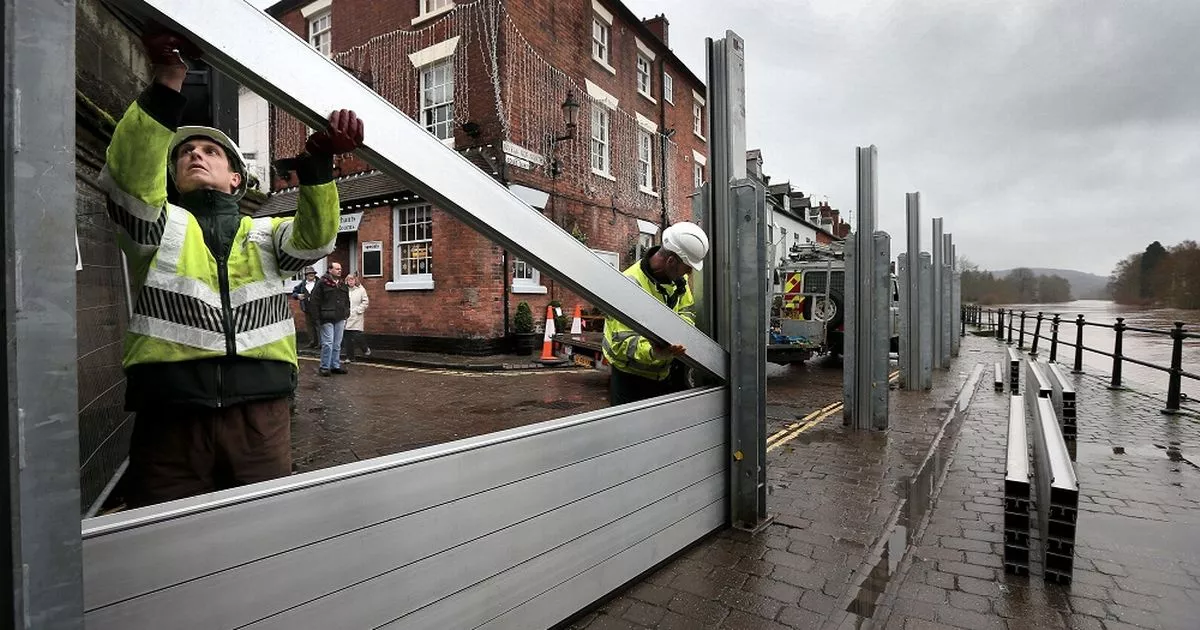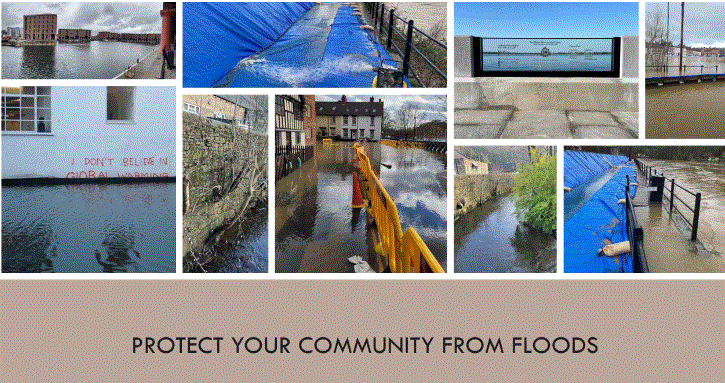For many Australian property owners, businesses and local councils, flooding causes extensive damage, disrupted livelihoods and long-term financial strain. And with extreme weather events becoming the norm, flood resilience becomes essential.
That’s where flood solutions come in. They’re designed to help prevent or minimise flood damage before, during and after it happens. But how do they actually work?
This blog examines the various types of flood mitigation methods, their benefits, and how they can be adapted to suit Australian properties and communities.
Types of Flood Solutions
Flood solutions offer a way forward. They help communities prepare, adapt, and bounce back. And they come in two main categories: structural and non-structural. When used together, they form a complete flood mitigation strategy.
1. Structural Solutions
These are physical defences and modifications designed to hold back, divert, or redirect floodwaters. Examples include:
- Flood barriers (temporary or permanent)
- Levees and embankments
- Floodgates and seals
- Elevated platforms and flood-adaptive buildings
2. Non-Structural Solutions
These are strategies focused on planning, communication, and preparedness to reduce risk in other ways:
- Flood warning systems
- Emergency response planning
- Community education and preparedness programs
- Insurance and financial safety nets
A well-rounded flood mitigation strategy combines both types to ensure maximum protection.
How Structural Flood Solutions Work
Physical Barriers
Flood barriers and levees act like shields. Their job is to block or divert water away from buildings and infrastructure. Some are permanent earth embankments or concrete walls. Others are deployable systems that can be set up when a flood is forecasted. Think of them as redirecting the water’s path, giving it somewhere else to go, away from your property.
Floodgates and Entry Point Seals
These are often installed at building entrances, driveways or doorways. During a flood, they’re sealed shut to stop water from seeping in. Some gates are automatic and triggered by water sensors; others are manually operated. They’re especially useful in urban areas where flash floods can rise quickly through drainage systems and low-lying entry points.
Flood-Adaptive Platforms
Rather than fighting water, these designs rise above it. Elevated buildings, floating platforms and amphibious homes are becoming more common in high-risk areas. They ensure critical structures remain safe and functional even when the surrounding land is flooded.
Engineering and Materials
Durability is key. These systems must withstand pressure, debris and prolonged exposure to water. That means using corrosion-resistant materials, reinforced joints, and solid foundations. Good design ensures that even in extreme events, the defences hold.
How Non-Structural Flood Solutions Work
Early Warning Systems
Time is everything in a flood. Early warning systems use weather data, river sensors and modelling to alert communities before a flood occurs. In Australia, systems like the Bureau of Meteorology’s alerts or local council warnings give people hours, sometimes days, to act.
Emergency Response Plans
Every business, household and council should have a flood plan. It outlines who does what, when and how. That might include:
- Evacuation routes
- Locations for sandbags or barriers
- Contacts for emergency services
- Plans for protecting valuables and stock
Having this mapped out in advance saves time and stress when it counts.
Community Education
The more people understand flood risks and how to respond to them, the safer everyone is. Community workshops, flood drills and public information campaigns help build awareness and confidence.
Insurance
Insurance doesn’t prevent damage, but it plays a huge role in recovery. A good flood policy helps cover repair costs, business interruptions, and temporary accommodation. It’s a financial back-up plan that can make or break your recovery timeline.
Integration: Building a Layered Defence
The most effective flood mitigation methods use a combination of structural and non-structural approaches. For example, a business might install floodgates (structural) while also subscribing to a flood alert system (non-structural).
To examine a real-life case study: After the 2011 Brisbane floods, many Queensland homes adopted raised foundations and improved drainage, while councils invested in better warning systems, resulting in reduced damage in subsequent floods.
Benefits of Effective Flood Solutions
When done well, flood protection:
- Reduces property and infrastructure damage
- Prevents injury and loss of life
- Shortens recovery times
- Minimises disruption to business and community life
- Boosts confidence and preparedness for future events
In the long term, flood solutions save money, far more than the cost of repair and rebuilding after repeated flood events.
Challenges and Considerations
Flood mitigation methods are not always straightforward. Some solutions can be expensive upfront. Some require ongoing maintenance or need to be updated as weather patterns shift. And getting funding or community buy-in can take time.
But the cost of doing nothing is often much higher. That’s why adaptability is crucial. As climate change alters flood risks, solutions must evolve as well, through smarter design, improved forecasting, and flexible planning.
Final Thoughts
So, how do flood solutions work? They work by anticipating risk, designing around it, and preparing people for it. It’s about managing where floodwater goes, how it affects you, and how quickly you can recover.
If you’re a property owner, business owner, or local council in a flood-prone area and are unsure about which flood mitigation methods are best for your situation, iREACT Consulting is here to help. With over 30 years of experience in flood resilience, John Alexander offers tailored advisory services to ensure your flood protection strategy is effective and sustainable.
Call (+61) 433 634 344 and get tailored flood solutions now!






